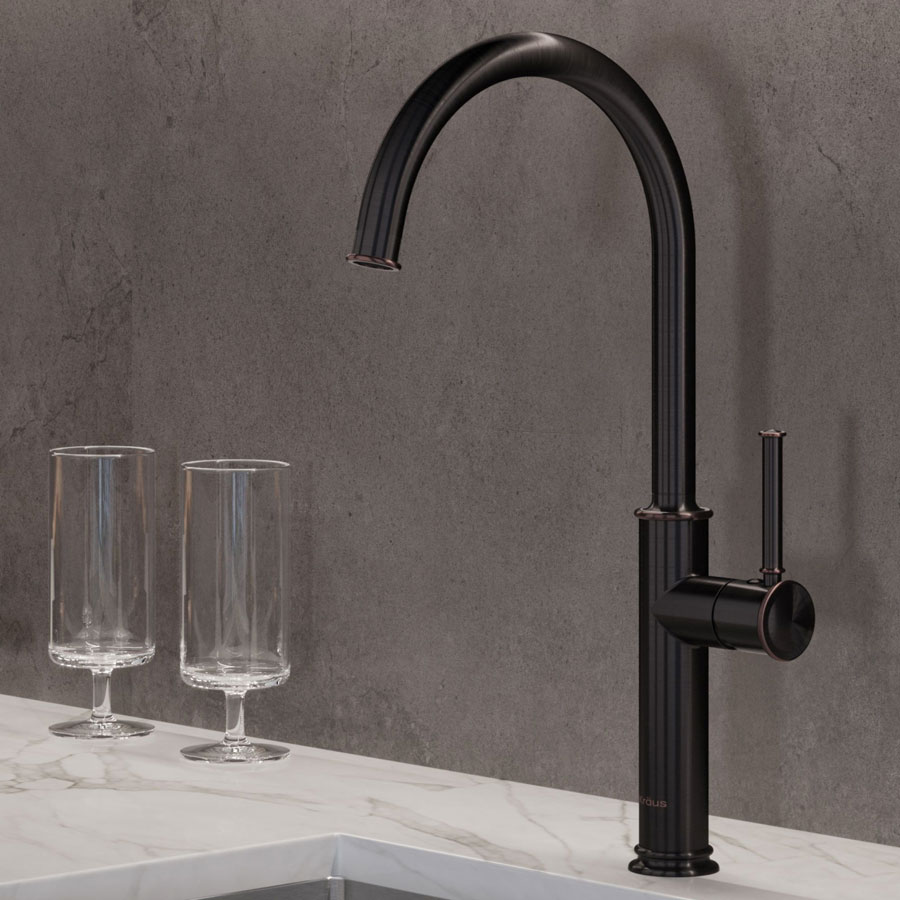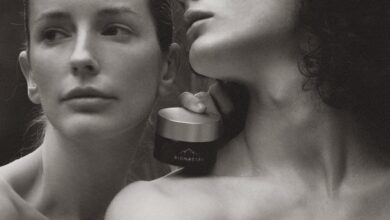No sink is complete without a faucet that provides utility to the whole kitchen area. Also, faucets add an element of style and functionality to sinks, which is another reason for its importance. How well you can make use of the sink depends a lot on selecting the right kind of faucet that looks beautiful and adds to the convenience of using the sink. You cannot expect much from faucets in terms of functionality, as its purpose is to regulate the water flow. But it can contribute immensely to the aesthetics of the place with its unique design. Faucets are available from the simplest to very sophisticated and artistic designs that lights up the environment when paired suitably with a matching sink and countertop. A trendy black kitchen faucet with a matching sink looks simply splendid that lights up the kitchen.
Although looks are essential, buying faucets based on its appearance is never a wise thing to do. Faucets must function well without leaking to keep the sink area clean, and it should make working at the sink comfortably. The size of the faucet, especially the height and the length of the spout, plays a vital role in ensuring proper functionality without spilling water all around.
Buying a quality faucet is not as easy as it might seem, and you must understand what goes into a good faucet by understanding the primary method of working so that you can find the type of faucet that suits you the most.
Types of faucets
Faucets control the flow of water, which is its only function, and its categorization revolves around the control design. The handle of the faucet is the visible control of the internal parts that regulate the flow of water.
The handle types – How easy it is to operate the faucet depends on the design of the handle, which is available with single handle and double handles, as well as an advanced type that does not have any handle but uses electronic control for opening and closing the tap. The last type offers the convenience of operating the faucet without using the hands, which of great help depending on the way you use the sink. By waving your hand, you can turn on or off the water supply.
Ease of operation – Check the ease of operating the faucet and the convenience of adjusting the distance between the spout and the sink. Generally, faucets have fixed spout height, but pull-down faucets have flexible, stretchable, and detachable spray head attachments with long hoses fitted to it. That makes it most convenient to speed up cleaning and rinsing work by directing water to every nook and cranny of the sink, including the apron if it is a farmhouse sink. In addition to pulldown faucets, there are pullout faucets and side spray faucets. Pullout faucets are like pull down faucets, but the spouts have a smaller reach and suitable for smaller kitchens.
Faucet height – The height of the faucet is another differentiating factor during selection. The type of usage of the sink and its size impacts the faucet height because using a faucet that has the spout located higher creates extra space within the basin that can accommodate larger pots and pans and allows better maneuverability during cleaning. Some faucet designs include an arc that extends from the upright of the faucet and ends in the spout. High-arc faucets are 8-10 inches tall above the sink plane, and low-arc faucets are between 3-8 inches.
Faucet mounting
The faucet mounting type influences the faucet design, and there are two types of faucet mounting – deck mounting and wall mounting.
Deck mount – Deck mounted faucets are the ones that you will commonly come across and consists of the faucet mounted on the sink surface on the rear end of the sink. This type of faucet mounting goes very well with drop-in sinks.
Wall mount – Faucets installed on the wall behind the sink just above it are the wall mounted faucets. Wall mounted faucets are different because it requires special plumbing inside the wall to install the faucets. Normally, the plumbing of sink in most kitchens is situated on the underside of the countertop, and if you plan to have wall mounted faucets, then you must arrange for the plumbing concealed within the wall behind the sink. Proper height adjustment to determine the right position of the faucet is necessary to ensure that there is no splashing. The design, style, and size of wall mounted faucets are different from deck mounted ones.
Special features enhance the convenience of use
How you want to use the faucet is a factor to consider during selection. If you wish to perform cleaning and filling tasks with ease by ensuring more maneuverability of the faucet, then you must look for pull-down or pull-out faucet with varied spraying options. The extra pressure of water applied as a concentrated jet ensures better rinsing and fills the sink faster. By using the thumb-trigger valve of the sprayer, you can control the water flow to avoid wastage when not in use.
For even better control and ease of use, the touch-free faucets are a great option as water starts flowing as soon as you bring your hands under the tap so that you can use both your hands to do the cleaning or prepping. The water flow stops automatically when you move away from the sink area as the sensors activate and stop the flow when the tap is idle for some time. Advanced features of the faucet prevent accidental activation of the faucet, which is beneficial for houses that have pets around.
The protective finish of faucets is also an important feature of the design that helps to maintain the good looks for many years with minimal maintenance. Since the appearance of fixtures is a concern for most homeowners, they cannot afford to ignore this aspect.
For deck mounted faucets, the number of mounting holes and its position impacts the faucet selection.




